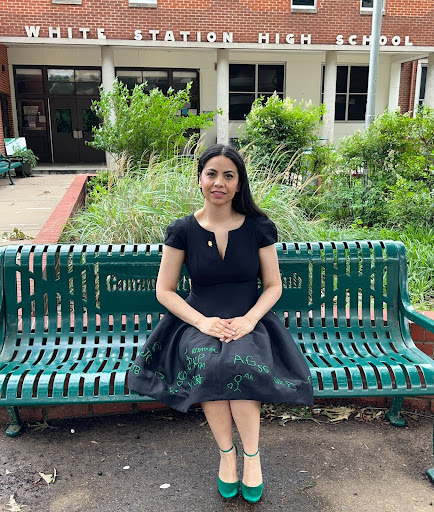
Fashion makes up a large portion of society and culture, which is why having a sense of style is so valued in the world today. There are many professions that restrict a person’s self-expression and limit their creativity, but for some, teaching is not one of them.
The outfit someone is wearing is one of the first things many people notice. People are constantly making impressions on others, and what they choose to wear can say a lot about a person and even foster relationships.
“I think the way people dress affects their relationships with anybody in most situations,” AP U.S. History and AP European History teacher Michael Stephenson said. “I think sometimes people dress more like students do and that is seen as a positive by the students, and I think sometimes when I see someone that dresses more like me that it might affect them as well.”
Stephenson has been teaching for 32 years, but his affinity for dressing more formally has been around much longer, choosing to wear a jacket and jeans with a tie in high school. His grandfather always dressed up, and Stephenson has chosen to follow in his footsteps.
“I remember [my grandfather] telling me one time that you always dress up if it’s something important, and to me, teaching is one of the most important things somebody can do,” Stephenson said.
Stephenson can often be seen wearing a suit and a tie, with a navy blue suit and a pink tie being a common theme in his daily outfits. He describes his style as business casual, not usually opting to follow the trend of casual clothing.
“I would say mostly business casual … I don’t usually wear t-shirts and shorts or anything like that,” Stephenson said. “I don’t usually wear tennis shoes. And it’s not that I criticize anybody else for doing [that], it’s just not my style.”
Expression through clothing is not limited to celebrities on TV, but in a school setting, what is considered appropriate varies.

(LESLIE THORNTON//USED WITH PERMISSION)
“Speaking of relationships, I know for some [the way someone dresses] really doesn’t matter and it shouldn’t affect the way you interact with people,” Spanish teacher Leslie Thornton said. “It’s practicality … the interaction will be different.”
For some, style is an extension of someone’s personality, or another way to express who they are. Thornton’s mood is affected by her outfits and how well she connects with them.
“When [an outfit] doesn’t click for me, I’m even in a bad mood,” said Thornton. “Even if people say, ‘Oh it looks good.’ If I don’t connect with it [or] if I’m not having fun with it, it changes my mood.”
Thornton wants to incorporate her students into the outfits she wears. Her favorite outfit is the dress she wore to her graduation, which had been embroidered by her students.
“I want to take [my students] with me,” Thornton said. “Now that I am about to start my PhD, I’m already thinking [about] what I want to do for graduation.”
Thornton always thinks about how she dresses and how she will feel about it. She considers every outfit she wears to be a costume.
“I like to have fun with what I wear, so when I see the end product, I see it like a costume,” Thornton said. “Do I want to be Mary Poppins? Do I want to be Wednesday? … Yes, it’s always a costume.”



































